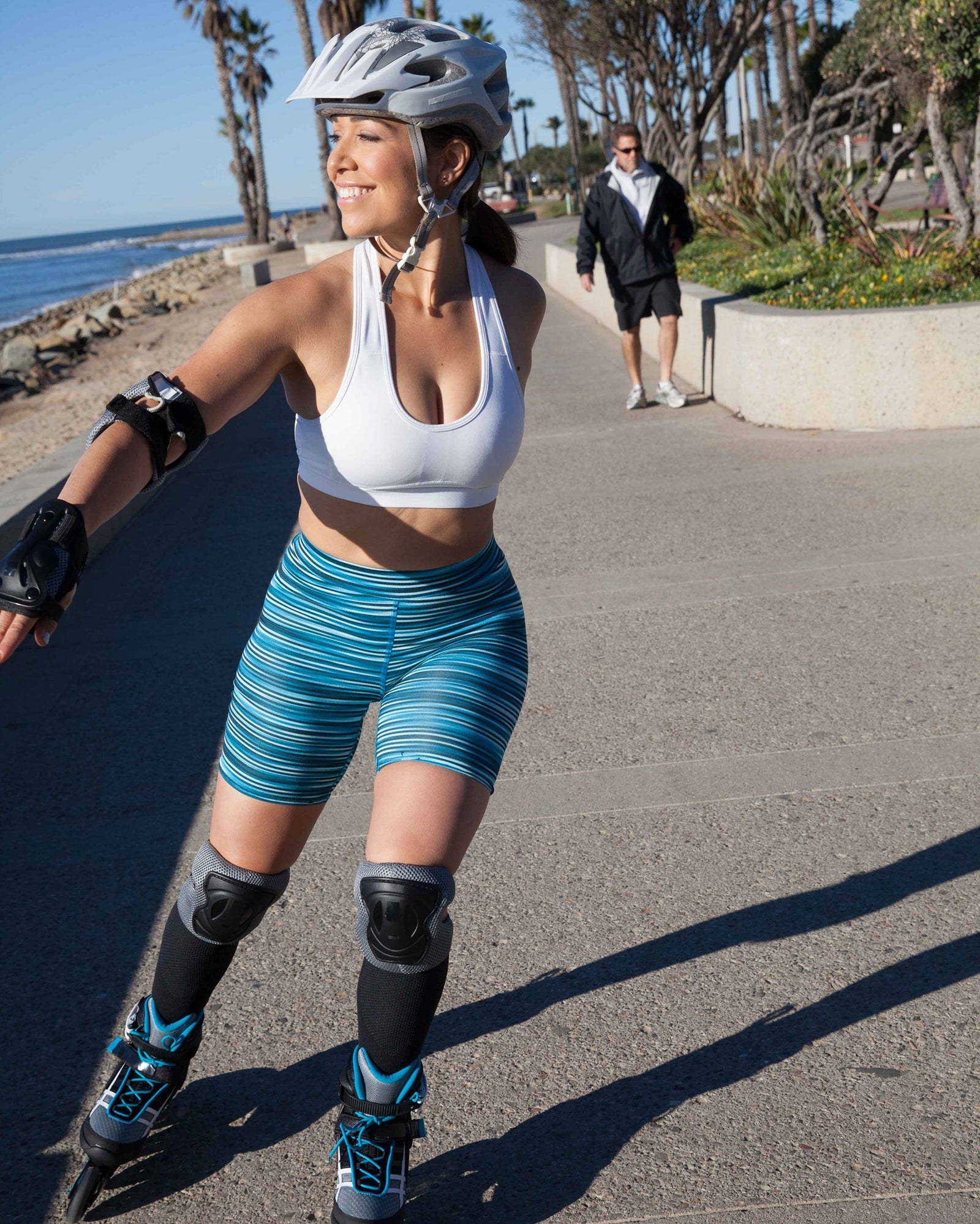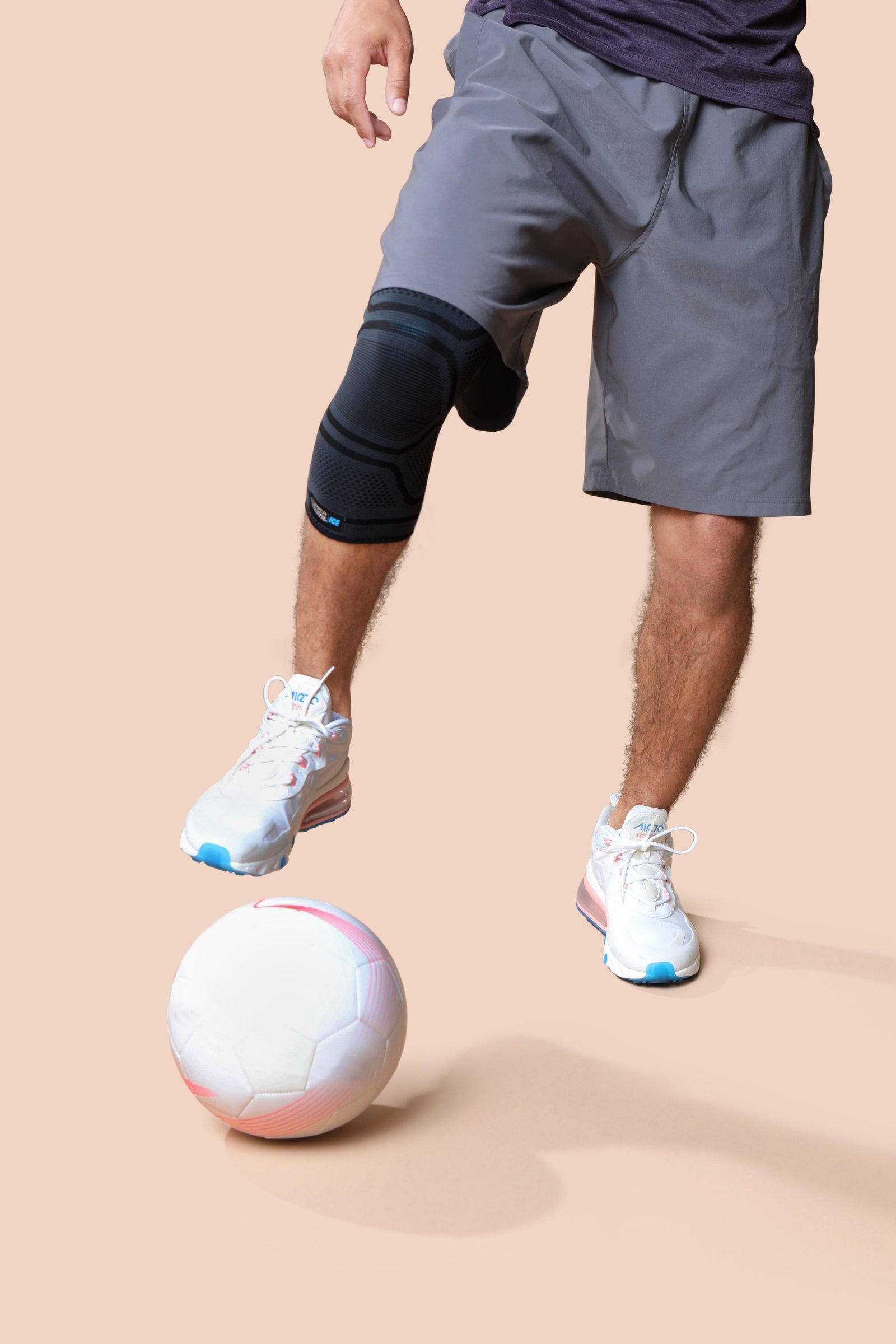Continue Shopping
Your cart is empty
Free shipping on orders over $65
Free socks with any purchase
Free shipping on orders over $65
Free socks with any purchase

G | R | 0 Accounts
Knee injuries can throw a wrench into your routine. Whether it was a ligament strain, a meniscus issue, or a post-surgery recovery, getting back to working out after any knee injury takes time, strategy, and a whole lot of patience.
It’s normal to feel hesitant, even nervous, about jumping back into movement. But the good news is that with a gradual, smart approach, you can rebuild strength, reduce discomfort, and move with more confidence again.
Let’s break it down so you can return to training the right way—without setting yourself back.
We understand the frustration of an injury interfering with your training plan, fitness routine, or even just your daily tasks. But, by being gentle with yourself and staying attuned to what your body needs at each step of the recovery process, you can get back to the movements you love.
Before jumping into any workout routine, it’s essential to understand what kind of injury you’re recovering from. Different knee injuries come with different recovery timelines.
A mild sprain might only need a few weeks of rest and rehab, while something like an ACL tear could require months of healing and structured physical therapy. If a healthcare provider gave you a specific recovery plan, use that as your foundation.
This isn’t the time to guess. Even if the knee feels okay some days, healing tissue needs time to rebuild strength and function. Progress at a pace that supports your body—not one that’s dictated by impatience.
Once you’ve been cleared for movement, low-impact activity is one of the best ways to reintroduce your body to exercise without placing too much stress on the joint.
Some great options to begin with:
Low-impact movement doesn’t mean easy—it just means it’s easier on the joints. These activities help support healthy blood flow and gently activate muscle groups around the knee so your body stays strong while healing. The goal at this stage isn’t intensity—it’s consistency and control.
The knee is a hinge joint that relies on surrounding muscles—like your quads, hamstrings, and glutes—for support. Rebuilding strength in these areas helps stabilize the knee and reduce the risk of future discomfort or tension.
To help rebuild strength after injury, start with bodyweight movements like:
Remember: progress is progress, no matter the timeline. Don’t push yourself too hard or quick, and focus on form. Adding too much resistance too soon can overload the joint and lead to setbacks.
When you’re ready, resistance training can be reintroduced with low weight and higher control. Think slow, steady movements, full range of motion, and stable footing. Strength is key—but stability is what helps you move with confidence.
Mobility is often overlooked after injury, but it plays a critical role in your comeback. Injuries can limit range of motion, and if that isn’t addressed, it can lead to stiffness and imbalances that affect how you move—and feel.
You can’t train hard without recovering well. Recovery isn’t a passive break—it’s a vital step in your progress. When you give your body the tools and time it needs to reset, you come back stronger.
Here’s what recovery should include:
Hydration, sleep, and nutrition are also essential. Your body needs fuel and rest to rebuild tissue and restore energy. Pay attention to how you feel in the hours after training—that feedback helps you adjust when needed.
After an injury, it’s easy to question every twinge. Discomfort and fatigue can show up unexpectedly, especially as you start increasing intensity. That doesn’t always mean you’ve done something wrong—it could be your body signaling that it’s still adjusting.
Sharp, localized discomfort or lingering soreness after a session could be a sign to ease up. Tuning in instead of pushing through gives your body a chance to respond—and recover—without added tension.
Adaptability matters. If your knee doesn’t feel ready for a run today, a bike ride or strength session might be a better option. The more flexible you are with your plan, the more sustainable your routine becomes.
Physical healing is only part of the journey—rebuilding your mindset is just as important. It’s common to hesitate when getting back into movement after an injury. Doubt creeps in. You may wonder if your knee is “ready” or if it’ll hold up during activity.
That’s okay. Start where you are. Small wins matter: completing a workout, doing more reps than last week, or simply feeling stronger walking up stairs. All of it counts.
Confidence grows with repetition. The more consistently you show up—at your pace—the more your body learns that it’s safe to move again. Your strength is still there. You’re just rediscovering it.
We know firsthand how frustrating setbacks can be. At Copper Fit, we’ve been there—and that’s why we design gear that helps you keep moving, even on the tough days.
Our copper-infused compression sleeves are made to support your active recovery. The gentle compression helps support healthy blood flow, which may help promote muscle relaxation and ease soreness after activity. Whether you're back at the gym, heading out for a walk, or recovering at home, our sleeves are built to move with you.
Getting back to your routine after a knee injury is a process—but you’re not doing it alone. We’re here to help you feel more supported, more confident, and ready to move forward—one step at a time.
Sources:
Wound Healing Phases | StatPearls | NCBI Bookshelf
Knee Joint: Function & Anatomy | Cleveland Clinic
Benefits of Compression Gear | UPMC HealthBeat
Ice Packs vs. Warm Compresses For Pain | Johns Hopkins Medicine




